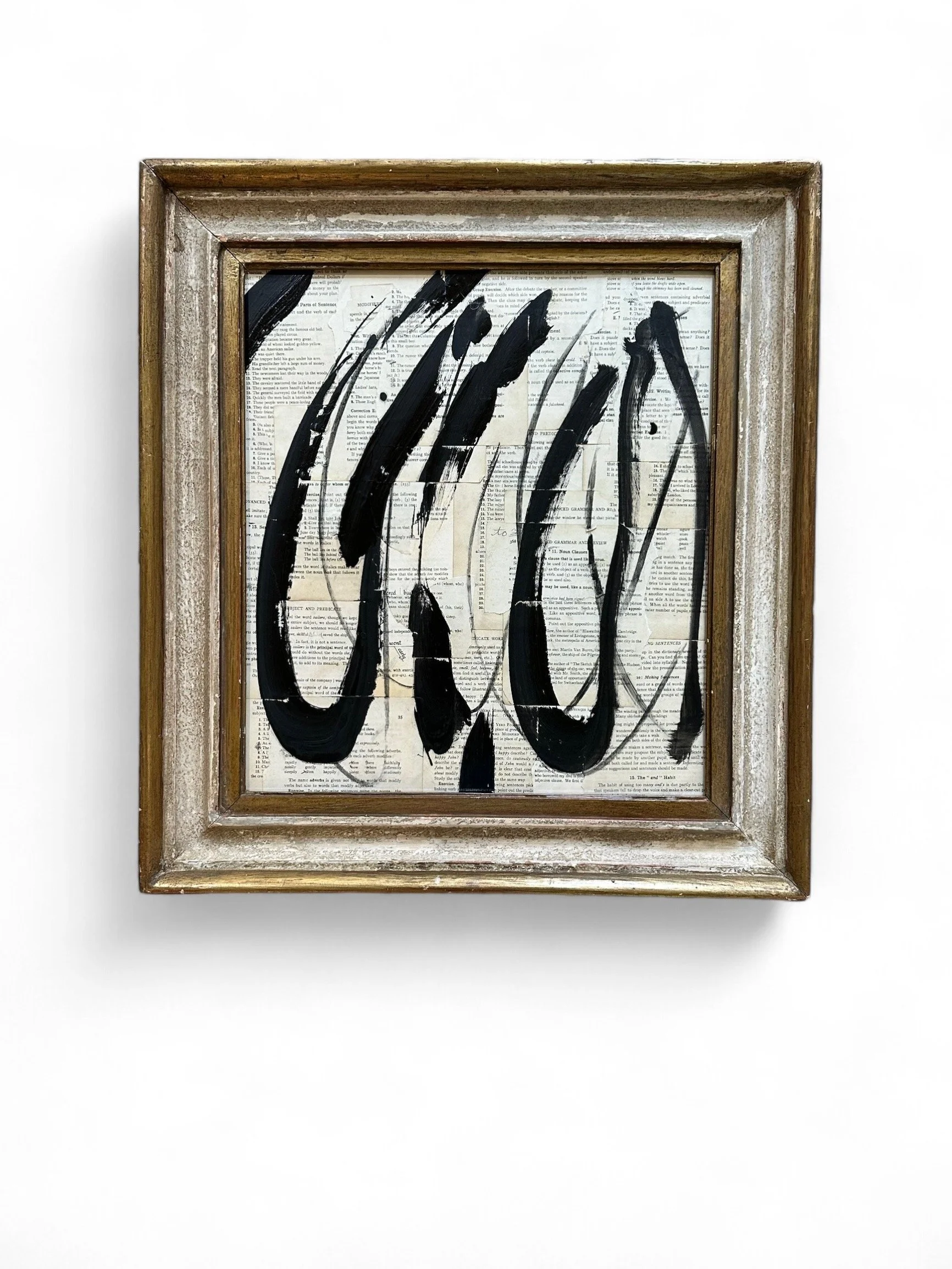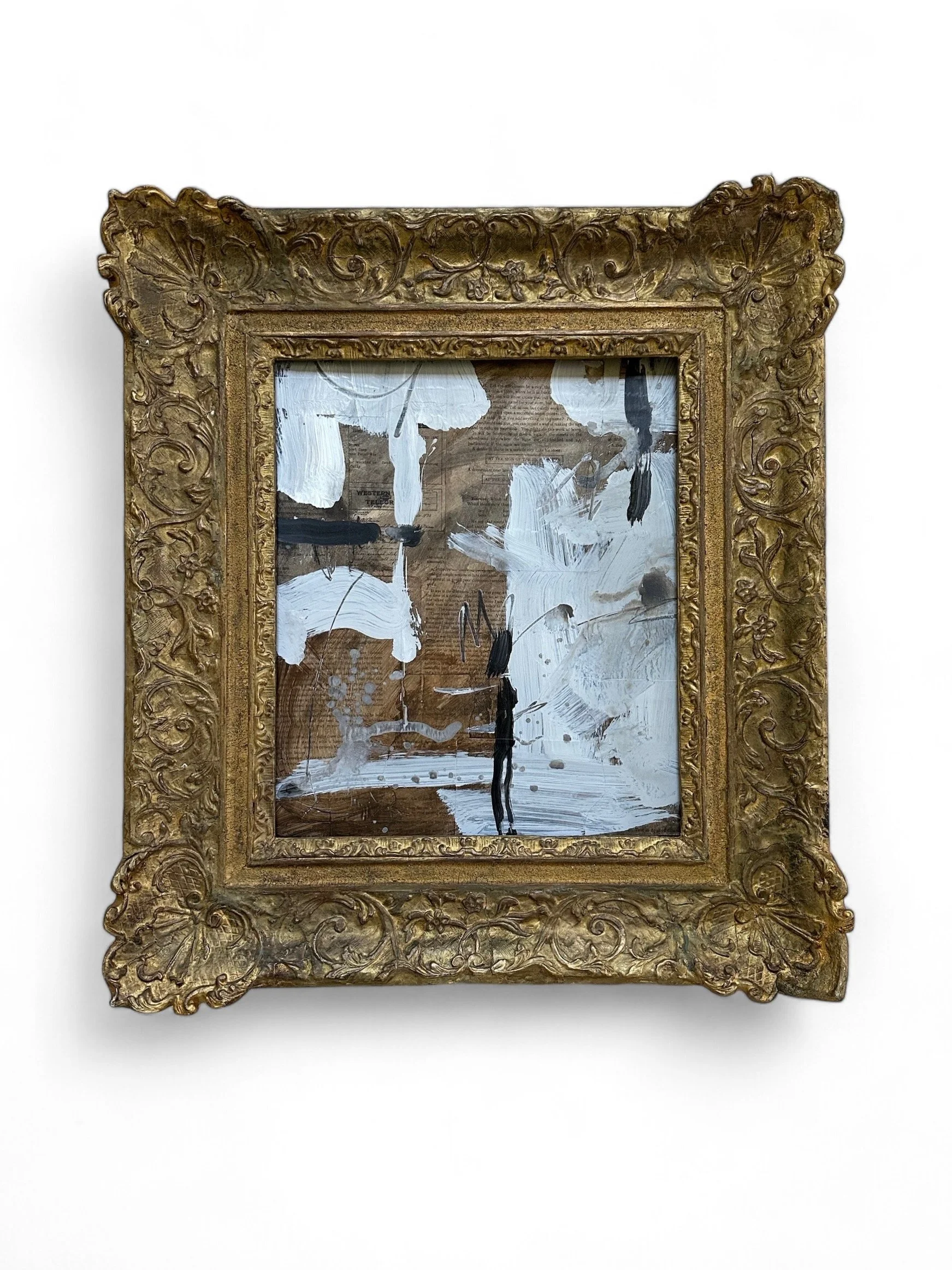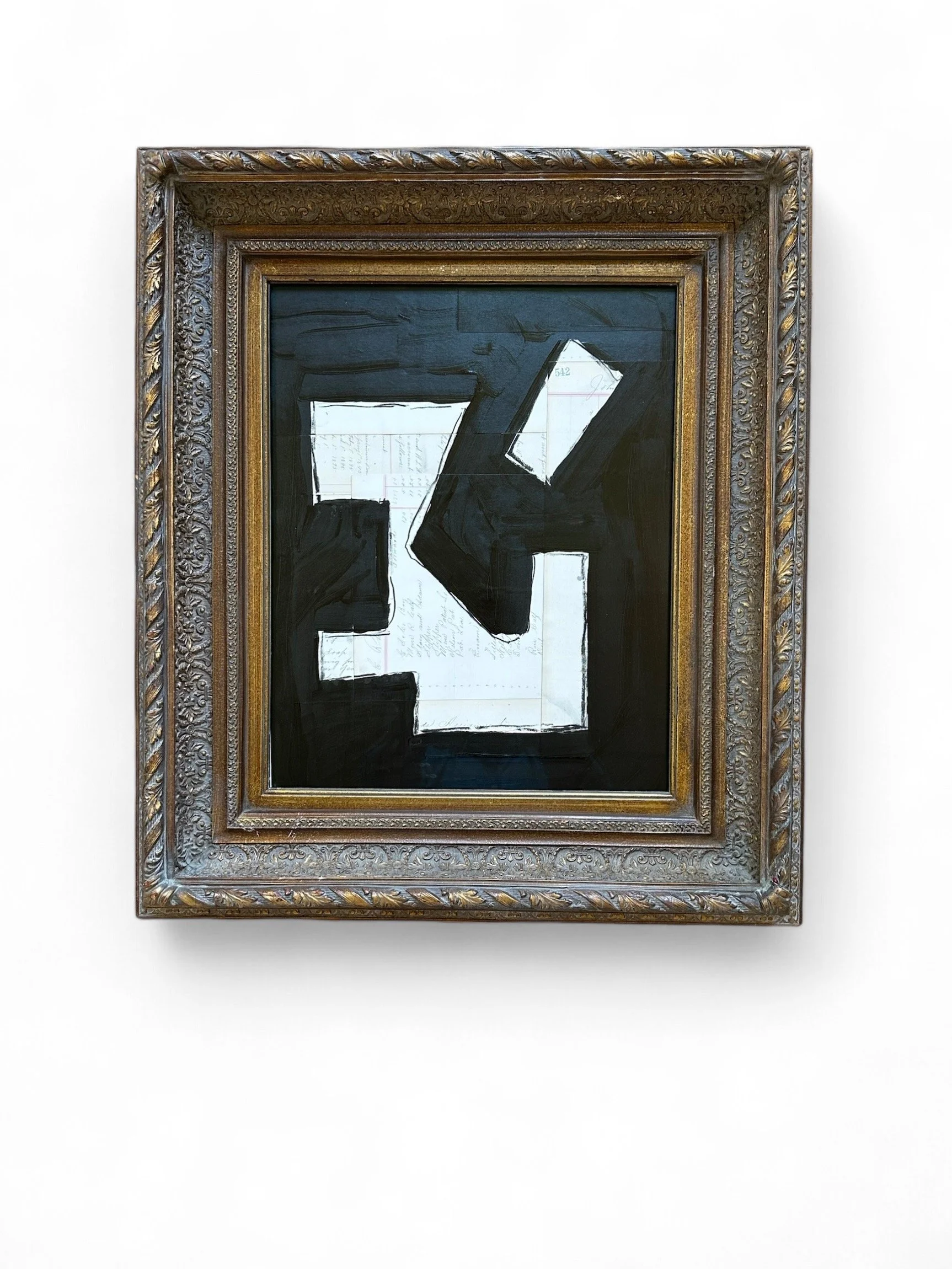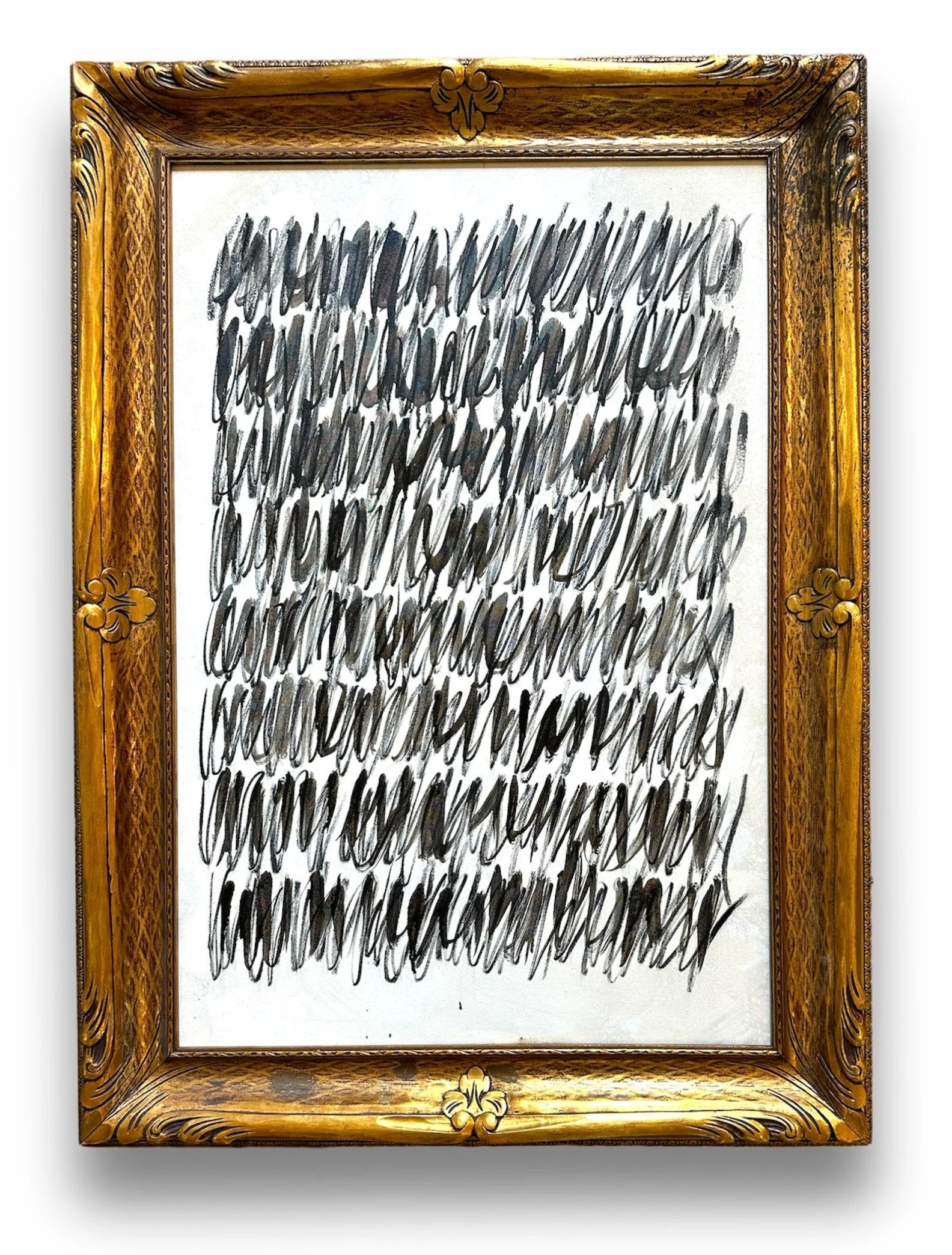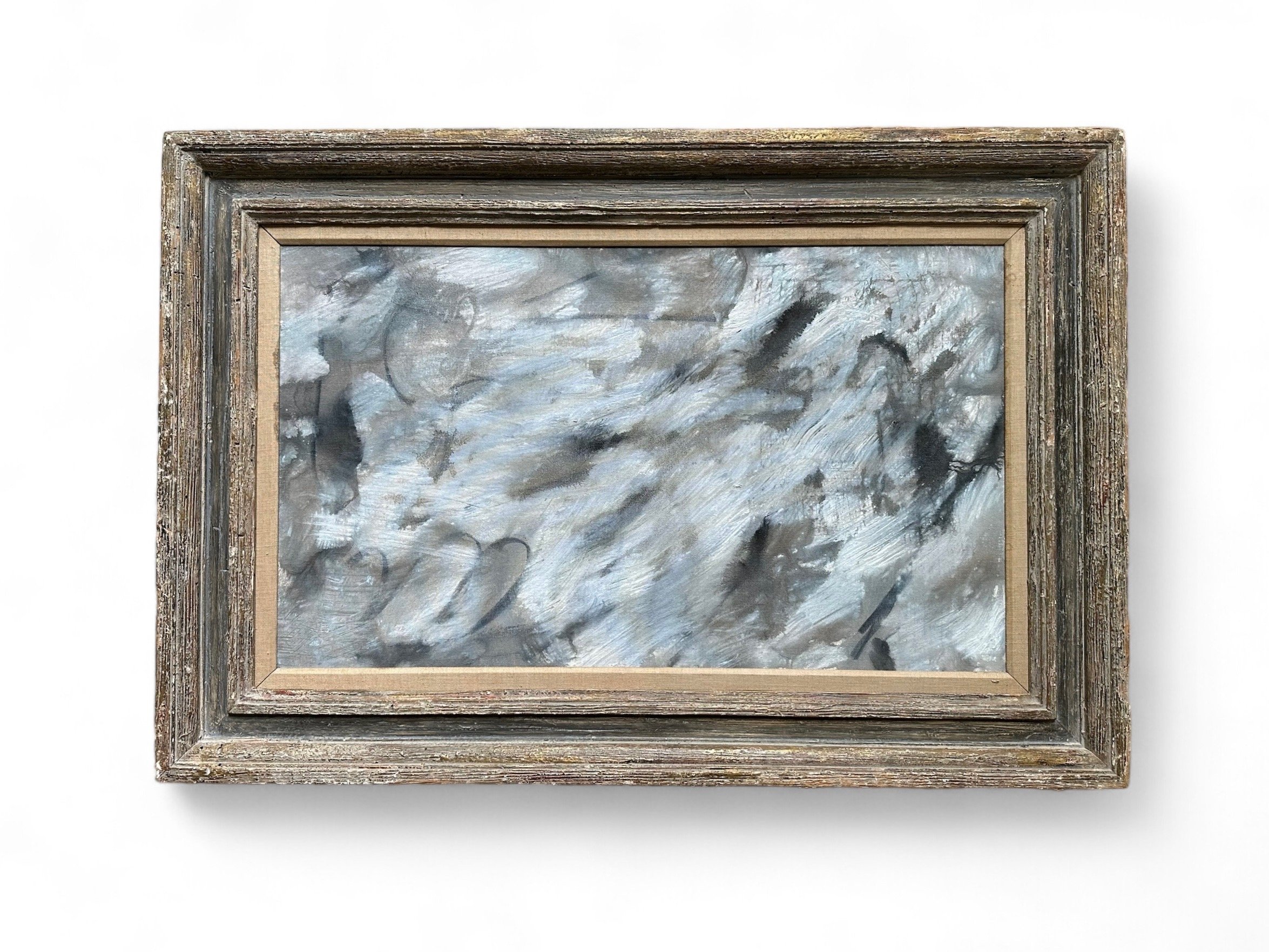
Michael Kennedy Spotlight
Michael Kennedy
Written by Nor Osborne, July 2025
Michael Kennedy’s painting is the perfect encapsulation of who he is, his soul breathes through each brushstroke. A dark explosion occurs on each canvas, a combination of scribbles, shapes, torn pages, shadows, the layering of vintage maps and papers, and bursts of charcoal, all packaged in an antique frame. His work is a collage of his past.
Michael first found his love of the arts with his grandmother, Mary Sherwood Wright Jones, a famous children’s illustrator for the ‘Weekly Reader,’ who encouraged him to explore his creative side. He spent a large portion of his childhood creating in his grandmother’s home, a huge gothic revival mansion in Newark, something he describes as “a magical place to be as a kid.
“I grew up by her side and loved her so deeply. She was an amazing woman. She had six grandchildren, and five of them are involved in the arts. She was a huge influence on us as kids, and without me really knowing it,” Michael says.
“She didn't teach us to paint, but she encouraged us to express ourselves and never criticized. She just told me to do what I loved, so I painted.”
This was especially impactful for a young Michael, who struggled with many learning challenges, causing much inner turmoil.
Mary’s unconditional love and encouragement inspired Michael to go on to attend Ohio University, majoring in fine arts. However, he became increasingly apprehensive about the job market he would meet following his graduation. So he shifted his focus, studying design and decorative arts. Michael finished his studies at Beaver College at the University of London.
“Professionally, my entire life has been in home goods. After I graduated, I got a job and stopped painting, embracing home decoration instead.”
Michael took on a wide range of corporate positions, entwined with the concept of design. He worked for the Henri Bendel department store company, the Columbus Museum of Art, and The Longaberger Company, a basket manufacturer that operated out of a 7 story building shaped like a basket in Newark, Ohio. When the Longaberger Company closed, Michael helped start a new business, Dresden and Company. Michael manages all of the creative wares and design aspects of this home accessory business.
Following the passing of his grandmother, Michael joined forces with his cousin, Anne Sherwood Pundyk, a painter located in New York City, to memorialize her work in an exhibit.
Together, they created a gallery titled “Permission to Create” that paired the work of their grandmother with their personal paintings at The Works Museum in Newark. The exhibit reconnected Micahel to his love of painting, influencing him to dive back into the craft.
It's Michael’s grandmother’s artistic history that informs many of the stylistic choices he makes. When his grandmother was studying art in New York City in 1913, the Armory Show took residence in a building nearby. European artists were invited to the show for the first time where they began to experiment with abstract self expressionism. This was a distinct shift away from the artistic culture of portraiture work and landscapes, moving into self expression. Michael believes that this movement “truly changed the entire approach to art in America,” and tries to encapsulate this distinct, abstract style in his art.
Michael’s work contains a plethora of references to his childhood, particularly the academic challenges he faced as a kid.
“I use a lot of pages from grammar books that I scratch and tear. I also use a lot of scribbles as well to show a pure emotional letting go,” Michael explains. “As I was painting, I found that I still had all those feelings in me. I decided, I'm going to do it my way. You're not going to tell me how I want to learn. I'm going to do it my own way.”
Michael’s art is deeply influenced by his career in the decorative arts as well, but not in the way one might assume.
“My job is highly structured around what I think the consumer wants, what colors are on trend, as I design and market a product. So my artwork is the opposite. That's why I don’t use a ton of color in my work. It is purely me just picking up a brush, playing, and seeing where it goes,” Michael says.
His love for design does still seep through as he finishes each piece, tying each painting together with an intentionally selected frame.
“I use antique frames from all over the world to frame my abstract style, combining the movement from realism to expressionism.”
Outside of painting and his design job, Michael still dedicates a large portion of his time to arts, especially at a local level. Michael has served on the boards of the The Works Museum, the Midland Theatre, and the Licking County Foundation.

